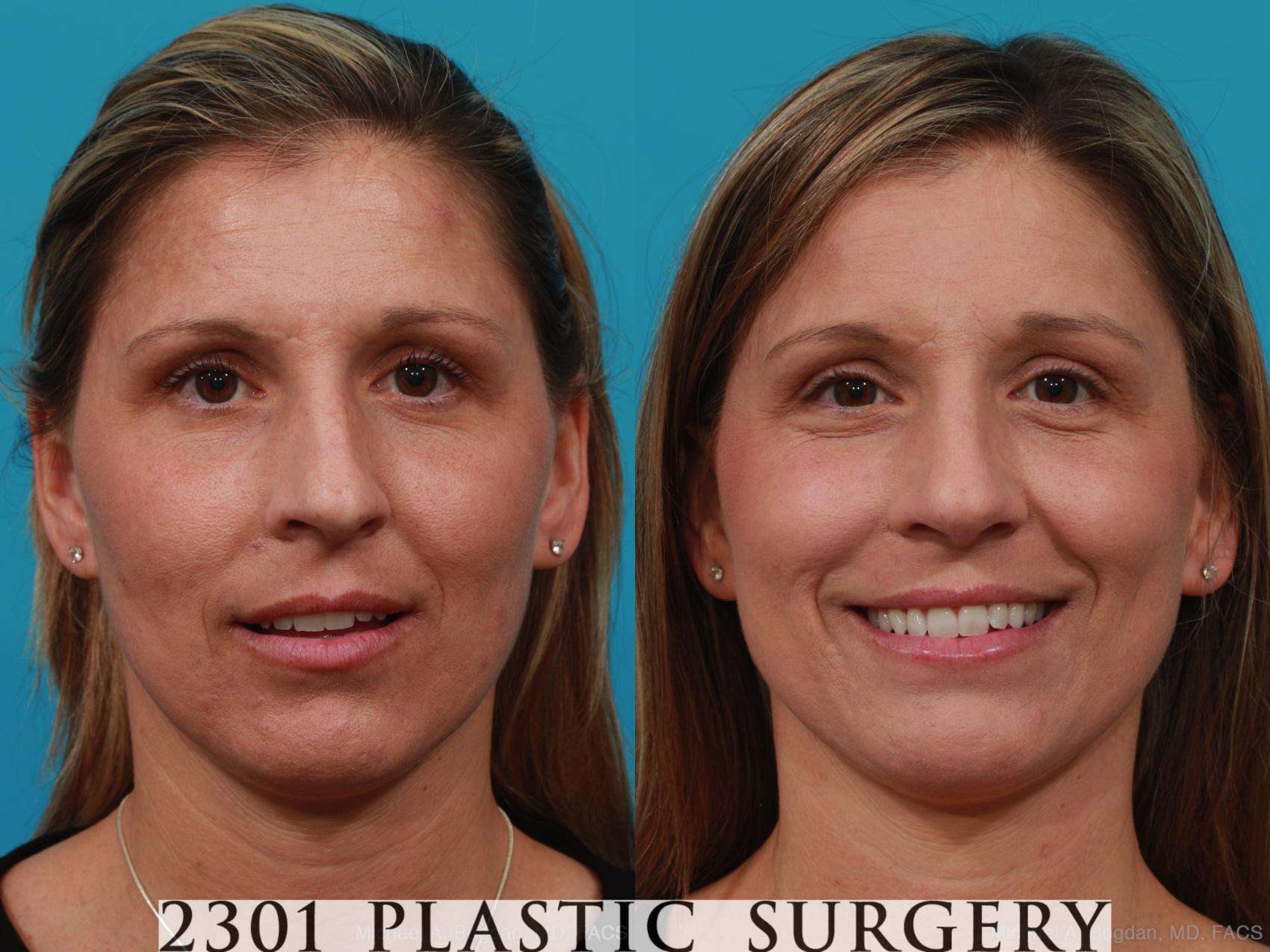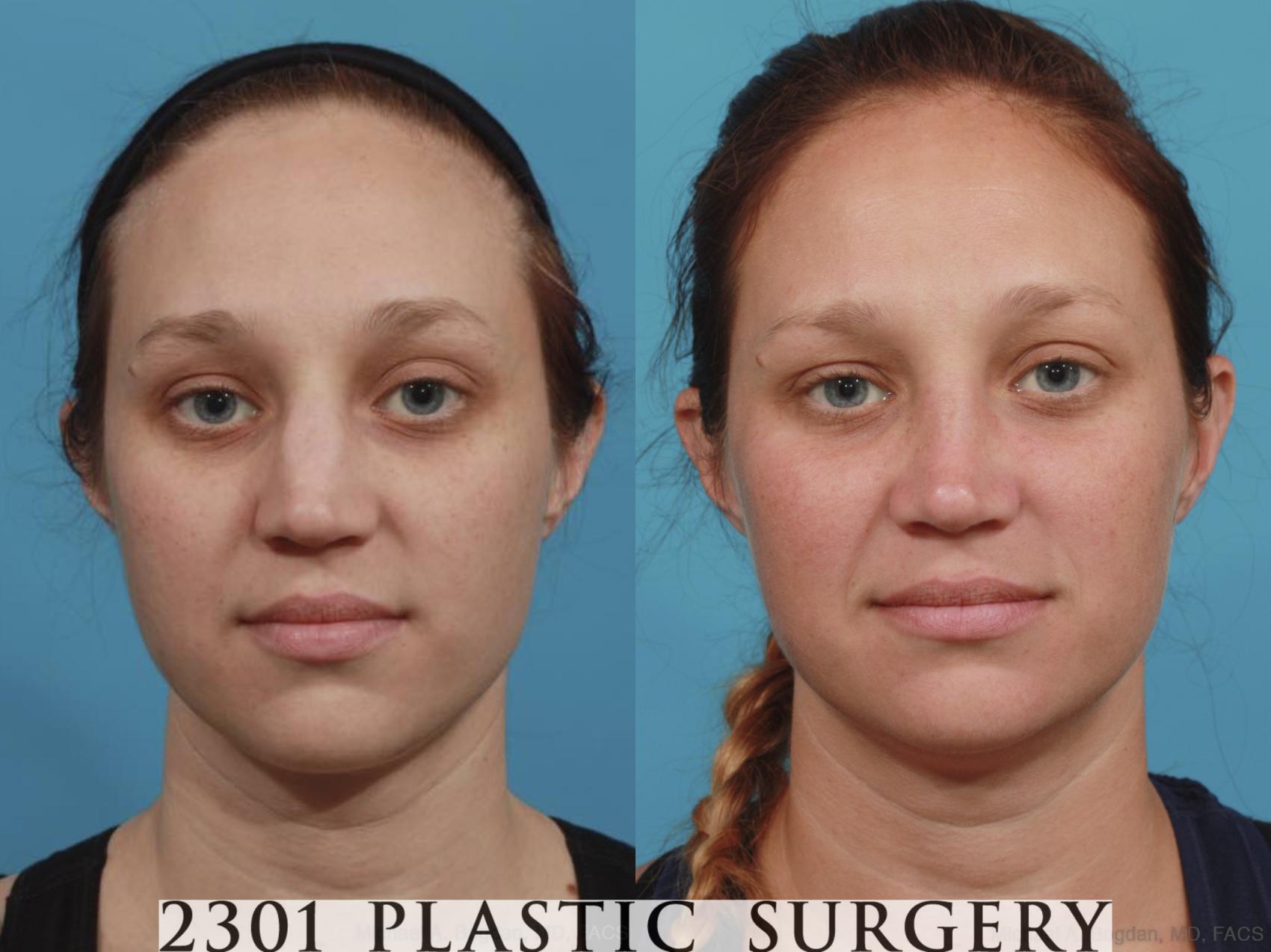Your nose isn’t just a central feature of your face; it’s often the cornerstone of facial symmetry and balance. Rhinoplasty helps you achieve this harmony if you weren’t born with it. But what’s the best approach for you—open or closed rhinoplasty? This comprehensive blog post will break down the differences to help you understand both techniques.
Rhinoplasty: An Overview
Rhinoplasty, commonly known as a nose job, is a surgical procedure that can correct a wide range of cosmetic and functional issues. With rhinoplasty, your surgeon can reshape, resize, and restructure your nose, giving you the nose you’ve always wanted or the relief you need from breathing issues.
What Is an Open Rhinoplasty?
In an open rhinoplasty, your surgeon makes a small incision along the columella—the soft, fleshy tissue that separates your nostrils. This particular technique allows your surgeon optimal access and visibility.
Such detailed access permits a high degree of precision, which is invaluable when making complex modifications to the nasal tip or correcting structural issues deep within the nose.
What Corrections Is an Open Rhinoplasty Best For?
Open rhinoplasty is often the preferred method for patients who require a range of functional or aesthetic corrections. Here are some examples:
Aesthetic Corrections
- Complex Reshaping: The open approach provides the level of detail and control needed for intricate nose reshaping, such as modifying the bridge, the tip, or the nostrils.
- Asymmetry: The open method allows the surgeon to achieve better balance and proportion if you have an uneven or asymmetrical nose.
- Nasal Tip Refinement: Open rhinoplasty is particularly beneficial when delicate work on the nasal tip is required, whether it’s reducing the size, changing the angle, or adding definition.
Functional Corrections
- Deviated Septum: One of the most common reasons people seek nose surgery is to correct a deviated septum, which can cause breathing difficulties. An open septorhinoplasty provides the visibility and space needed to realign the septum effectively.
- Internal Valve Collapse: When the side walls of your nose collapse inward, it can also obstruct airflow. Open rhinoplasty allows for targeted repair.
About Scarring
Many prospective patients express concern about scarring. However, the incision made on the columella in an open rhinoplasty is discreetly hidden in a natural crease. The incision heals exceptionally well in most cases, leading to minimal visible scarring.
What Is a Closed Rhinoplasty?
In contrast to open rhinoplasty, closed rhinoplasty involves making incisions entirely hidden inside the nostrils. Closed rhinoplasty offers many of the same benefits as open rhinoplasty but is often best suited for cases that require less extensive restructuring or refinement.
The Procedure
During closed rhinoplasty, the surgeon accesses the nasal bones and cartilage through the internal nostril incisions. This technique allows the surgeon to reshape and resize the nose while leaving the outer skin untouched.
Advantages
Besides the absence of external scarring, one of the primary advantages of closed rhinoplasty is that the recovery period is usually somewhat quicker. Due to less extensive dissection of the nasal tissue, patients may experience reduced postoperative swelling. Dr. Bogdan often prefers the closed approach for his patients.
What Can Closed Rhinoplasty Correct?
Closed rhinoplasty is a versatile surgical option that can address a variety of functional and aesthetic concerns. These are some of the corrections in which the closed rhinoplasty approach excels:
Aesthetic Corrections
- Dorsal Hump Reduction: If you’re bothered by a bump or hump on the bridge of your nose, closed rhinoplasty can smooth it out for a more refined profile.
- Nasal Tip Refinement: While open rhinoplasty offers more visibility for tip work, minor adjustments to the nasal tip can be achieved effectively through a closed approach.
- Nostril Resizing: If your concern lies solely with the size or shape of your nostrils, closed rhinoplasty may be adequate for achieving excellent results.
- Symmetry: Minor asymmetries can be corrected through closed rhinoplasty, making it a less invasive option for those who don’t require significant changes.
Functional Corrections
- Mild Septal Deviation: Closed rhinoplasty can be an effective solution for mildly deviated septums that don’t require extensive correction.
- Turbinate Reduction: If enlarged turbinates are causing airflow obstruction, they can often be reduced through closed rhinoplasty.
What Is Rhinoplasty Recovery Like?
The procedure and recovery are generally well-tolerated by most patients. The first 3 to 4 days post-surgery will likely be the most uncomfortable due to swelling and bruising. Your nose will be splinted for 5 to 7 days to maintain its shape. Patients typically resume work and normal activities within 7 to 10 days.
Most swelling will subside in 2 to 4 weeks, allowing you to see your results. However, subtle changes will continue over the course of a year. Rhinoplasty results are permanent, making the investment well worth it for most patients.
Learn more about rhinoplasty recovery in this related blog post.
Rhinoplasty Before-and-After Photos
Are you wondering how rhinoplasty could change your look? Browse these images from our before-and-after gallery to see the remarkable transformations we’ve achieved for patients like you.
Ready To Take the Next Step?
If you’d like to speak with a fellowship-trained plastic surgeon about the difference rhinoplasty can make for you, we invite you to call our office at (817) 442-1236 or request a consultation.
Visit our before-and-after gallery to see more rhinoplasty transformations.






